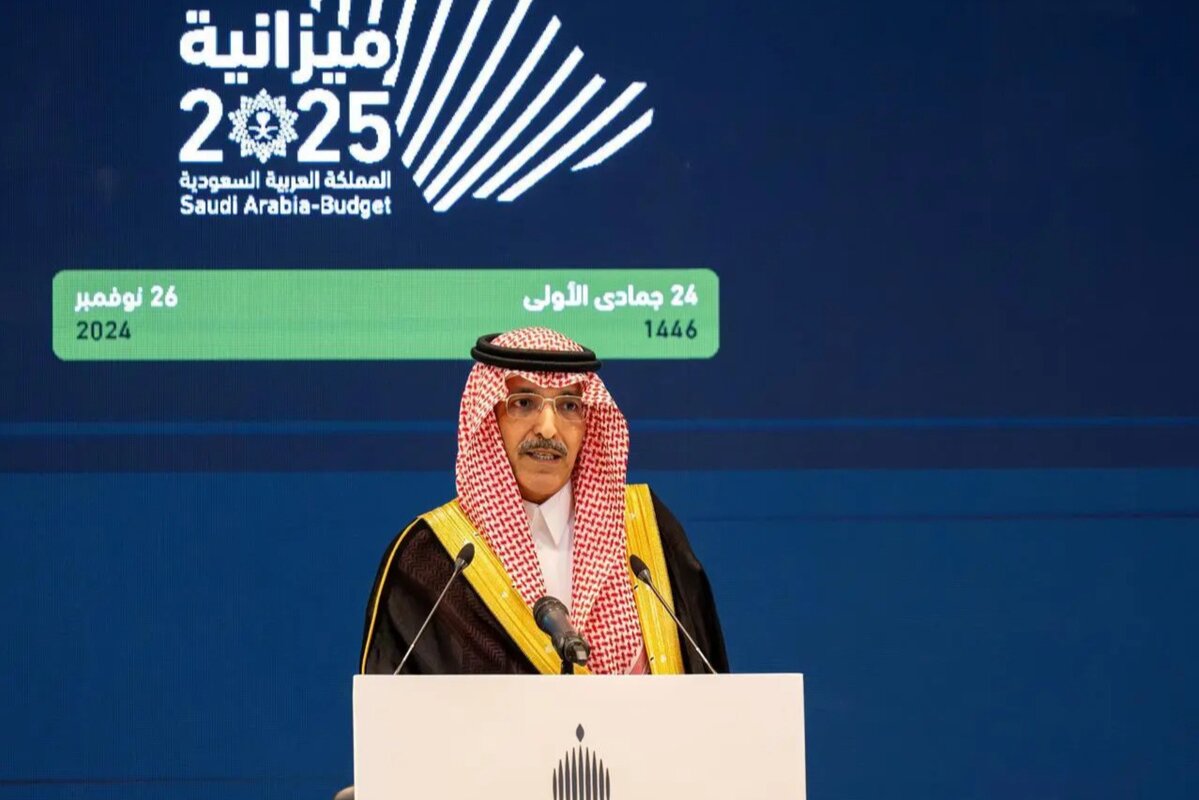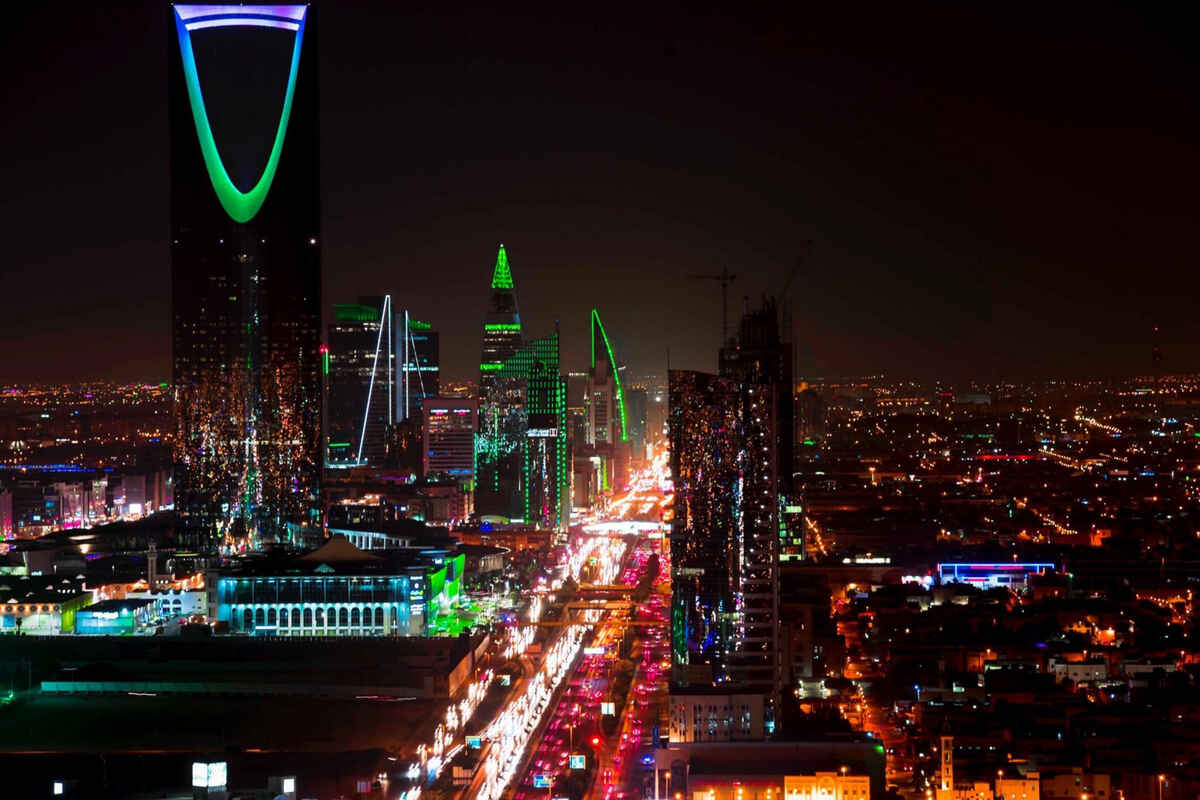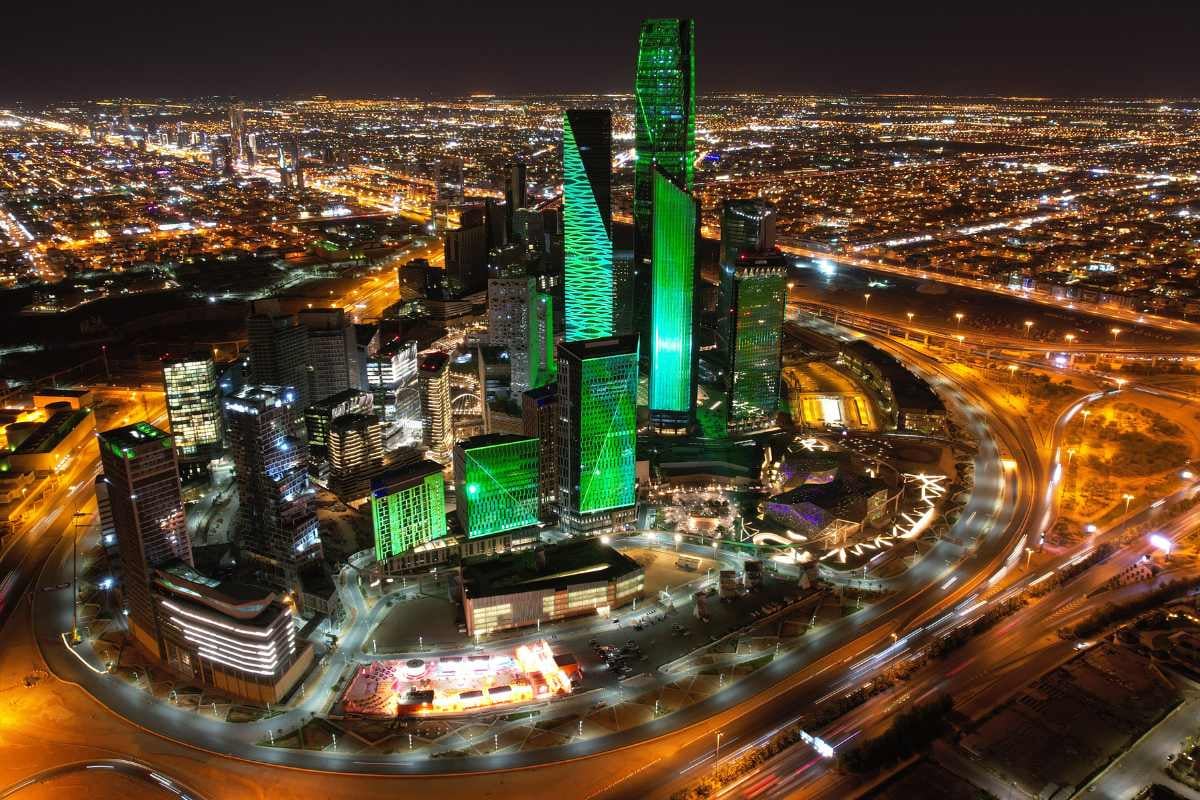Al-Jadaan projected a 4.6 percent growth rate for non-oil GDP in Saudi Arabia in 2025
Saudi Arabia’s Finance Minister, Mohammed Al-Jadaan, highlighted the strong performance of key economic indicators in the Kingdom, stating that nominal gross domestic product (GDP) surged by 64 percent from 2016 to the end of 2023, reaching around SAR4.1 trillion ($1.09 trillion). While there have been significant drops in oil GDP affecting real GDP, the growth of the non-oil GDP has been a driving force behind the sustained expansion of the economy, with forecasts predicting a growth rate of 4.6 percent in 2025 and similar averages extending through 2027 and beyond.
Resilience of the economy
During a press conference in Riyadh, which announced the state’s budget statement for the fiscal year 2025, the minister reaffirmed the resilience of Saudi Arabia’s economy, which has shown remarkable capability in addressing global challenges proficiently. He pointed out that the Kingdom’s non-oil economy has seen impressive growth in spite of geopolitical obstacles. He remarked that HRH the Crown Prince highlighted the importance of maintaining fiscal sustainability and prudently managing public debt while noting the structural transformations achieved in the economy over recent years.
Al-Jadaan underscored the firm directives from the Custodian of the Two Holy Mosques, King Salman bin Abdulaziz Al Saud, to ensure that the Saudi Arabia-Budget 2025 is executed with exceptional efficiency and in line with its designated objectives. He also emphasized remarks made by His Royal Highness Prince Mohammed bin Salman bin Abdulaziz Al Saud, the Crown Prince and Prime Minister, regarding the budget’s vital role in enhancing public services, generating business and employment opportunities for citizens, empowering the private sector, and establishing clear programs to effectively implement national strategies.
Inflation control and private investment
The minister emphasized that inflation is under control in Saudi Arabia, with rates at 1.7 percent this year, considerably lower than global averages, and expectations that inflation will remain below 2 percent in the medium term. The minister also highlighted the notable structural transformation in private investment’s contribution to GDP. Since the launch of Vision 2030 in 2016, this contribution has risen by 2 percent, reaching 24.7 percent of GDP by mid-2024, reflecting the private sector’s confidence in the Kingdom’s economic reforms.


Projections for non-oil GDP
For the current year, non-oil GDP is projected to reach 3.7percent, which underscores the outcomes of ongoing efforts over the past six to seven years to implement strategies effectively, supported by substantial public and private sector investments. Al-Jadaan provided projections for the conclusion of the fiscal year 2024, estimating expenditures at SAR1.345 trillion, revenues at SAR1.23 trillion, and a fiscal deficit of approximately SAR115 billion. He noted the government’s continued commitment to expansionary spending in crucial sectors that directly affect citizens and stimulate the economy, resulting in significant job creation and business opportunities.
Impact on SMEs
Al-Jadaan stated that the growth in small and medium enterprises (SMEs), as indicated by data from the General Authority for Statistics, illustrates the impact of government spending and the economic cycle generated by these investments. He reiterated the government’s dedication to maintaining fiscal prudence while promoting economic growth in the upcoming fiscal year. He added that the aim is for increased growth in both oil and non-oil revenues, as well as overall economic indicators.
2025 budget expectations
Looking ahead, Al-Jadaan confirmed that the 2025 budget will witness a 2.7 percent increase in spending compared to the 2024 budget, with total expected expenditures around SAR1.285 trillion. Revenues are projected to reach approximately SAR1.184 trillion, leading to an anticipated deficit of around SAR101 billion. The minister noted that these figures represent the government’s planned expansionary strategy aimed at enhancing services for citizens, improving service quality, expanding offerings, and focusing on strategies that significantly impact the economy, jobs, business opportunities, and sustainability. This plan includes the completion of projects initiated in previous years to integrate the economic system technologically and in terms of infrastructure.
Allocation for key sectors
Al-Jadaan revealed that next year’s budget will allocate SAR526 billion for education, health, social development, and municipal services—central pillars as directed by the country’s leadership. He further emphasized that the distribution of spending considers where strategies and projects with a significant impact on the nation, citizens, business opportunities, and economic sustainability should be prioritized.
Regarding medium-term revenue projections, the minister indicated that the government’s revenue forecasts in the budget are typically cautious. He anticipated revenues for 2026 to be about SAR1.198 trillion and for 2027 to reach approximately SAR1.289 trillion. As for expenditures, Al-Jadaan stated that they are expected to grow in the medium term, reaching SAR1.429 trillion by 2027. He noted that this aligns with the long-term financial planning the government has undertaken over the years to achieve a more accurate and efficient financial strategy.
Focus on spending priorities
The plan, he explained, aims to achieve a mature stage concerning spending priorities, expenditure efficiency, and financing strategies that have a tangible and sustainable impact on the economy. Al-Jadaan underscored the importance of investing in citizens and public services for the Kingdom’s long-term economic sustainability.
Concerning the budget deficit, he indicated that the anticipated shortfall will persist in the medium term, reaching around SAR140 billion by 2027. He also highlighted that the Ministry of Finance remains cautious in its revenue estimates, as reflected in the budget statement published on the ministry’s website.
Read more: Saudi Arabia approves FY2025 budget, forecasts $315.2 billion in revenues
Structural changes in the Saudi economy
Al-Jadaan addressed several key points that had not been previously discussed in budget presentations. He highlighted structural changes in the economy that are expected to take years to fully materialize. However, their effects are already becoming noticeable, he added.
Al-Jadaan noted that spending on high-impact projects, strategies, and programs to achieve Saudi Vision 2030 is increasing by approximately 33 percent annually. Furthermore, spending in these areas has surged by 38 percent annually since the launch of Vision 2030 and is projected to continue rising, with the largest share of expansionary spending earmarked for these initiatives.
Rise in non-oil activities
The minister indicated that the increase in spending has contributed to a rise in the share of non-oil activities in GDP. This share climbed from around 47 percent in 2016 to approximately 52 percent by the first half of 2024. He remarked that such structural changes require years to fully come to fruition. These changes include the development of economic cities and major infrastructure projects. Some projects are still nearing completion, he added.
Growth in non-oil revenues
He discussed the 154 percent increase in non-oil revenues since 2016. These revenues reached SAR 472 billion. Furthermore, the minister highlighted that this growth signifies the Saudi economy’s reduced sensitivity to oil price fluctuations. This stability helps ensure consistent spending and sustainable economic growth, he added. The minister emphasized the crucial role of private investment, which has increased its contribution to GDP to 24 percent, compared to the oil sector’s 28 percent. He underscored the significance of non-oil exports in fostering a competitive economic sector, generating high-quality jobs, and improving the balance of payments through increased foreign currency inflows.
Labor market developments
On the labor market front, Al-Jadaan stated that the number of Saudi employees in the private sector has risen by 23 percent from 2016 to mid-2024, reflecting considerable growth in private sector activities. He praised the expanding role of the tourism sector, which has become the second-largest contributor to the balance of payments after oil, with revenues reaching SAR48 billion ($12.77 billion) by the end of 2023, expected to exceed this amount in 2024. He highlighted that this transformation of tourism from an importer to an exporter of foreign currency represents a significant strategic achievement.
The minister noted that the government is focusing in the medium term on completing major projects related to transportation, quality of life, and healthcare, which include King Salman Park, the Sports Boulevard, The Red Sea, Qiddiya, NEOM, and Diriyah—each contributing to the realization of Saudi Vision 2030.
Sectoral and regional strategies
Al-Jadaan discussed how sectoral and regional strategies have been pivotal in driving structural changes within the Saudi economy, emphasizing the ongoing support and focus on these areas. He highlighted sectoral strategies, with a focus on the top five sectors of priority, particularly the industrial sector, which intersects with national security, employment capacity, export potential, and competitiveness, thus bolstering the balance of payments.
Importance of the tourism sector
The significance of the tourism sector and its influence on the country’s GDP was also a focal point in his address, portraying it as one of the largest sectors capable of generating numerous jobs and contributing positively to the balance of payments through ongoing projects. He stressed the essential services rendered to various tourism initiatives throughout the Kingdom as part of efforts to nurture this vital sector of the Saudi economy by creating business opportunities and employment.
Role of transportation and logistics
Highlighting the critical role of the transportation and logistics sector, Al-Jadaan stated that the industrial sector cannot flourish without robust logistical support for the transport of goods both domestically and internationally. He pointed out that transportation and logistics are crucial sectors empowering various other industries by establishing logistics hubs to capitalize on the Kingdom’s central location across three continents. The minister commended the significant initiatives of the Ministry of Transport and Logistic Services in enhancing seaports, airports, roads, rail services, and logistics zones.
Broader energy sector initiatives
Al-Jadaan explored the broader energy sector, including renewable energy, natural gas, and the extension of gas networks to industrial zones across the Kingdom. He mentioned desalination plants, power stations, and major factories nationwide, alongside the supply chains for renewable energy.
Addressing the military sector, the minister noted that the Ministry of Defense is implementing a ten-year plan, emphasizing military expenditure and ambitious goals for localizing military industries.
Concentration on Vision 2030 programs
In concluding his remarks during the news conference, Al-Jadaan emphasized that the upcoming period will concentrate on the Vision 2030 programs, showcasing numerous achievements made in relation to these initiatives. In response to a question regarding the budget deficit despite increased revenue and growth in the non-oil sector, the minister discussed the debt ceiling and public finance management, addressing revenues, expenditures, financing methods, and borrowing. He asserted that borrowing should be considered instead of cutting spending when the return from expenditure through debt surpasses the cost of the debt.
The minister stated that debt levels in the Kingdom remain lower than those of most countries in the G20, and there is capacity within the debt plan to borrow in the coming years while accommodating very manageable deficit levels as a percentage of GDP.


Compensation for removals
Regarding removals and land compensations and their impact on the budget, Al-Jadaan emphasized that such actions are undertaken solely for the public good in accordance with regulations, adding that property assessments for removals are conducted by licensed professionals from an independent authority, the Saudi Authority for Accredited Valuers “Taqeem,” comprising qualified individuals who evaluate properties based on various factors, including the type of property, its location, and the impact on the owner.
He noted that the government has allocated substantial amounts to compensate owners of informal settlements, including those lacking official deeds, acknowledging and respecting their circumstances. For instance, approximately SAR55 billion was disbursed as compensation in 2024.
Aramco shares and financial market
On the topic of the Saudi government’s offering of Aramco shares in the financial market, Al-Jadaan stated that several objectives were achieved through this transaction, including enhancing transparency and disclosure while partially monetizing these assets to support the Public Investment Fund’s (PIF) economic initiatives. He explained that nearly 16 percent of Aramco’s shares were transferred to the PIF or its subsidiaries, bolstering its financial capacity through dividends and enhancing borrowing ability. He added that there are currently no specific plans to transfer additional shares to the fund, and any such transfer would be announced in due course.
Royalty and tax revenue
The minister stated that beyond the ownership of Aramco shares, the government will receive 100 percent of royalties and 100 percent of taxes; the only decrease will be a portion of the profits based on the percentage transferred to either the PIF or to the public in the financial market. However, the government will still retain 84 percent or 83 percent of the profits.


Comprehensive government support
Al-Jadaan highlighted that government support encompasses not only direct social assistance such as social security and the Citizen Account Program but also essential free services like healthcare, education, security, and infrastructure. The budget allocates significant funds to these sectors: SAR260 billion for healthcare, SAR200 billion for education, and SAR121 billion for security.
Enhancing social support efficiency
The minister discussed ongoing efforts to enhance the efficiency of social support to ensure it reaches those in need through continuous reforms, including restructuring the social security system and extending the Citizen Account Program until the end of 2025, along with other initiatives aimed at improving the economic and social impact of support.
He made a clear distinction between public finances and the PIF, explaining that projects like NEOM, Qiddiya, and The Red Sea are executed by companies owned by the PIF, with budgets that are independent from the state’s public finances. He assured that all major projects have clear plans and strategies with periodic reviews to guarantee their efficient execution, affirming that no strategic project is left unfunded up to 2030.
Low inflation rates
Al-Jadaan also stressed the Kingdom’s success in maintaining low inflation rates relative to other countries in recent years, citing government measures, including freezing energy prices and ensuring the availability of essential goods. He added that the government continually strives to balance spending efficiency with sustained development to ensure that significant economic projects remain unaffected.
The minister concluded the news conference by expressing gratitude to the Kingdom’s leadership for their immense support for development and the Saudi economy, while also expressing pride in the efforts of security personnel and government employees across various sectors in achieving the objectives of Saudi Vision 2030.
